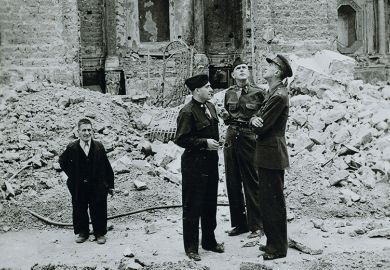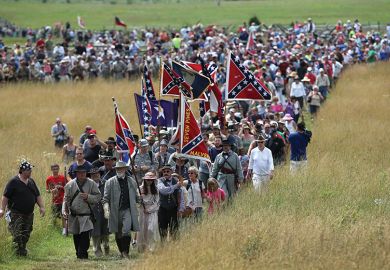We have a common instinct for what constitutes “play”, but how do we understand, analyse and classify different forms of play?
It is widely agreed that play defines a space apart and at the same time impregnates every primordial human activity, as the Dutch historian Johan Huizinga demonstrated in his celebrated book, Homo Ludens: The Play Element in Culture. Yet the drawing of a taxonomy of play and play spaces has proved difficult, because of play’s inherently ambiguous nature. This is the challenge that Rodrigo Pérez de Arce takes up in City of Play.
If play is considered a “prime cultural engine”, he asks, why has so little attention been paid to its “tangible signs”? More particularly, “what kind of artefacts does it engender? And how are the urban contours of the playground defined?” Recognising the strong interaction between play as action and architecture as its “support”, City of Play considers the impact of play on the 20th-century city. As Pérez de Arce shows, with the onset of modernity – which brought with it an expanded leisure society and “spare time as a statutory right” – play made a more tangible impression on urban settings than ever before.
The author is an academic and a practising architect, and his book is written from an architectural perspective while using a historical framework. In reading play as an architectural programme, he draws on the distinction set out by the French sociologist Roger Caillois between the concepts of paidia (which, in City of Play, is inexplicably rendered “paideia”) for spontaneous play, and ludus for structured games. This binary logic becomes the constant analytical probe to differentiate between forms of play.
The book is divided into two parts. “Fields” discusses the physical interfaces and spatial typologies that have negotiated the development of play in the city, while “Players” analyses different modes of play through the presentation of three particular modern players: the athlete, the child and the citizen (the characters that best describe the 20th-century leisure society). Ludus dominates Pérez de Arce’s kaleidoscopic landscape, which ranges from mazes to hunting grounds, race tracks to golf courses and parks; from the public square as empty arena to the birth of the stadium and other sport fields; from post-war children’s playgrounds to the utopian promise of freedom of the Situationist City.
He also reflects on the relevance of his project to “reinvigorat[ing] notions about the public sphere, while adding lessons about its rich ascendancy of forms, grounds, and occasions”. Indeed, City of Play offers a fascinating view of how urban settings have negotiated play, giving birth to an extensive repertoire of spatial typologies in response to particular ludic agendas.
However, the question of play in today’s city is left entirely unanswered. Given new digital agendas and strategies of place-making, one misses a perspective that would shed light on these contemporary tactics of play. Perhaps we would find that paidia is as present as ludus in the 21st-century city.
Catalina Pollak Williamson is an architect and urban activist using play to develop new forms of participatory citizenship. She is a PhD candidate at The Bartlett Development Planning Unit, UCL and teaches at the University of East London.
City of Play: An Architectural and Urban History of Recreation and Leisure
By Rodrigo Pérez de Arce
Bloomsbury Academic
296pp, £75.00 and £24.99
ISBN 9781350032170 and 2163
Published 31 May 2018
POSTSCRIPT:
Print headline: The playgrounds we live in
Register to continue
Why register?
- Registration is free and only takes a moment
- Once registered, you can read 3 articles a month
- Sign up for our newsletter
Subscribe
Or subscribe for unlimited access to:
- Unlimited access to news, views, insights & reviews
- Digital editions
- Digital access to THE’s university and college rankings analysis
Already registered or a current subscriber?







